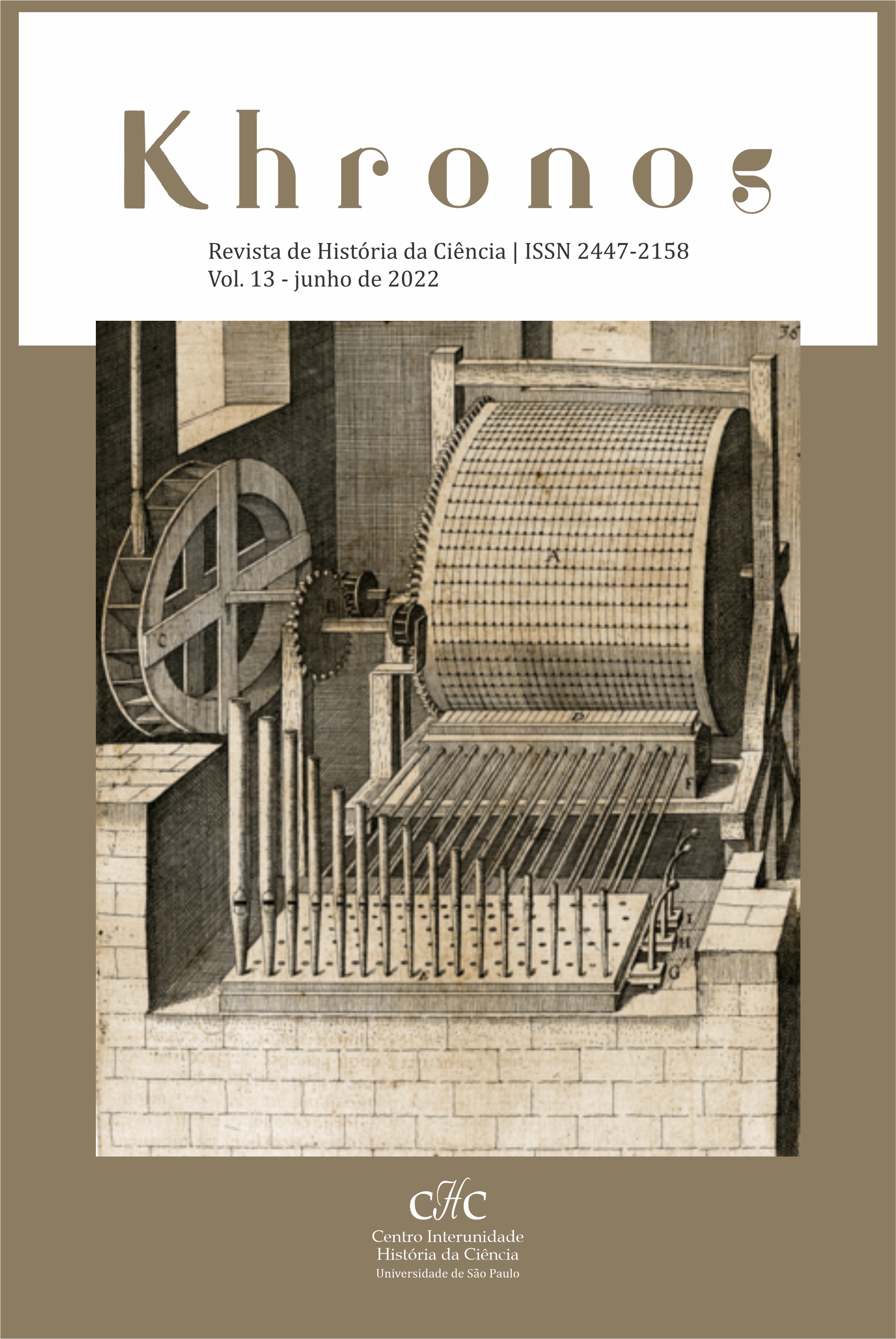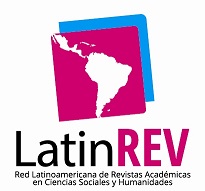Styrian refining at Ipanema Ironworks: gestures engendering crystals in 1885
DOI:
https://doi.org/10.11606/issn.2447-2158.i13p1-44Keywords:
Ipanema Ironworks, Refining, archaeometallurgy, chemical signatureAbstract
The production of wrought iron bars at Ipanema Ironworks is examined based on the description written by Dupré, in 1884, about the refining process used there, and by the microstructural analysis of samples obtained in the collections of Museu Nacional, in Rio de Janeiro, in 2014. Similar bars were used in the Brazilian railroads of the 19 Century. The microstructural inhomogeneities observed in those bars are similar to those described in the international literature about contemporary pieces. It is possible to correlate the chemical composition of the iron ore used at Ipanema to the composition of crystals found in the slag inclusions, becoming a viable parameter to establish a “chemical signature” of the bars there made.
Downloads
References
ARAUJO, P. E. M.; PICANÇO, J. L. P.; FARIA, G.; ZUFFO, M. K.; BALZA-NI, M.; ROSSATO, L.; SASSO, D. F.; LANDGRAF, F. J. G. Evolução do perfil interno dos altos-fornos brasileiros no século 19. In: 47º Seminário de Redução de Minérios e Matérias-Primas, ABM São Paulo, p. 432-456. 2017. DOI 10.5151/2594-357X-0EDPIAFB.
BARROS, Gustavo O Desenvolvimento do setor siderúrgico brasileiro entre 1900 e 1940: Criação de empresas e evolução da capacidade produtiva. In: IV Jornadas de Historia de la Industria y los Servicios, 2013, Buenos Aires. CD de las IV Jornadas de Historia de la Industria y los Servicios, 2013.
BERTIN, Eduardo Henrique. Caracterização química comparativa de inclusões de wustita em ferro refinado do século 19. TCC (Graduação) USP, 2017. 72p.
BUCHWALD VF, WIVEL H. Slag Analysis as a Method for the Characterization and Provenancing of Ancient Iron Objects. Materials Characterization. 1998;40(2):73-96.
CALÓGERAS, J.P. A Fábrica De Ferro de S. João de Ipanema, em seis partes. Revista Brasileira, v. 1, 1895.
CARVALHO, J. Murilo de. A escola de Minas de Ouro Preto: o peso da glória. Rio de Janeiro: Centro Edelstein de Pesquisas Sociais, 2010, 196 p.
CASTRO, Adler Homero Fonseca de. A pré-indústria e governo no brasil: iniciativas de industrialização a partir do arsenal de guerra do Rio de Janeiro, 1808-1864. 2017. Tese (Doutorado em História Comparada) – Universidade Federal do Rio de Janeiro, Rio de Janeiro, 2017.
CHARLTON, M.F. ; Blakelock, E. ; Martinón-Torres M.; Young T. Investigating the production provenance of iron artifacts with multivariate methods. Journal of Archaeological Science, v. 39 p. 2280-2293, 2012.
DUPRÉ, L. Memória sobre a Fábrica de Ferro de São João do Ipanema. Anais da Escola de Minas de Ouro Preto. v. 4 p. 37-68, 1885.
ESCHWEGE, G.B. Memória sobre as dificuldades das Fundições e refinações nas fábricas de ferro. Memórias Econômicas da Academia Real de Ciências de Lisboa, tomo 4, p. 121-128. Lisboa, 1812.
FELICÍSSIMO, J. História da siderurgia de São Paulo, seus personagens, seus feitos. Ed. Instituto Geográfico e Geológico de São Paulo. 1969.
FERRAND, P. A indústria do Ferro no Brasil (província de Minas Gerais). Annais da Escola de Minas de Ouro Preto, número 4, pag 122-139, 1885.
GARÇON, A-F Vents et fours en paléométallurgie du fer, du minerai à l’objet. Programme collectif de Recherche, SRA Bretagne, année 2006. Rapport final - https://halshs.archives-ouvertes.fr/halshs-00202682/
GUARINO, V.; AZZONE, R. G.; BROTZU, P.; GOMES, C. B.; MELLUSO, L.; MORBIDELLI, L.; RUBERTI, E.; TASSINARI, C. G.; BRILLI, M. Magma-tism and fenitization in the Cretaceous potassium-alkaline-carbonatitic complex of Ipanema São Paulo State, Brazil. Mineralogy and Petrology, Viena, v.104, p. 43–61, 2012.
HASSENFRATZ, Jean-Henri. La Sidérotechnie, ou l'art de traiter les minéraux de fer, pour en obtenir de la fonte, du fer et de l'acier. Paris: Firmin Didot, tome premier, 1812. Disponível em: http://bavarica.digitale-sammlungen.de
KARSTEN, C.J.B. Handbuch für Eisenhüttenkunde. Ed. C. Reimer, Berlin, 1841.
KILLICK, D., FENN, T. Archaeometallurgy: The Study of Preindustrial Mining and Metallurgy. Annu. Rev. Anthropol. 2012. 41:559–75.
LANDGRAF, F. J. G., CASTRO, A. H. F. de, ARAUJO, P. E. M., REGALA-DO, L. B. Os canhões de Ipanema: tecnologia, indústria, logística e política em 1840. Anais Do Museu Paulista: História E Cultura Material, v. 29, p. 1-36, 2021.
LANDGRAF, F. J. G.; RIBEIRO, M. Y. Q.; ROSA, G. I. L.; CARVALHO, P. S. G.; RODRIGUES, D. L.; MAIA, R. R.; BENEDUCE NETO, F.; AZEVE-DO, C. R. F. Archaeometallurgy of ferrous artefacts of the Patriótica Iron Fac-tory (19 century, Ouro Preto, Brazil), Revista da Escola de Minas International. En-gineering Journal. v.74, n.4, p.483-501, 2021.
LE COZE, Jean. Purification of Iron and Steels a continuous effort from 2000BC to AD2000. Materials Transactions of the Japan Institute of Metals, vol 41, n.1, 2000, pp219-232.
MAIA, Rafael R. Análise de inclusões de escória em amostras metálicas da Fábrica de Ferro de Ipanema. Dissertação (Mestrado) – Programa de Pós Graduação em Engenharia Metalúrgica da Escola Politécnica da Universidade de São Paulo, São Paulo, 2014. 209 p.
MAIA, R. R.; DIAS, M.S.; AZEVEDO, C.R.F.; LANDGRAF, F.J.G. Archae-ometry of ferrous artefacts from Luso-Brazilian archaeological sites near Ipanema River, Brazil, REM: R. Esc. Minas, Ouro Preto, v. 68, n.2, p.187-193, 2015.
MAMANI-CALCINA, E. Microanálise de inclusões não-metálicas de artefatos ferrosos: Investigação da assinatura química de procedência (Real Fábrica de Ferro São João de Ipanema, Sítio de Afonso Sardinha, Sítio de Missões e Mossend Iron Works) por análise hierárquica de conglomerados. Dissertação de Mestrado. Universidade de São Paulo, São Paulo, 2016.
MAMANI-CALCINA, ELMER ANTONIO; LANDGRAF, FERNANDO JO-SÉ GOMES; AZEVEDO, CESAR ROBERTO DE FARIAS. Investigating the Provenance of Iron Artifacts of the Royal Iron Factory of São João de Ipanema by Hierarchical Cluster Analysis of EDS Microanalyses of Slag Inclusions. MATERIALS RESEARCH, v. 20, p. 119-129, 2016.
MURSA, Joaquim de Souza. Relatório do Diretor da Fábrica de Ferro de São João do Ipanema. In BRASIL, Relatório do Ministério da Guerra apresentado à Assembleia Geral Legislativa, 1874.
MURSA, Joaquim de Souza. Nota ao Editor. Revista de Engenharia, p. 259, 1883.
NIEMEYER, C.C. Relatório sobre a Fábrica de Ferro de Ypanema. In Ministério da Agricultura, Comércio e Obras Públicas, Relatório apresentado à Assembleia Geral Legislativa, 1878.
OLIVEIRA, Franciely da Luz. Forjando “máquina grande” nos sertões do Atlântico: dimensões centro-africanas na história da exploração das minas de Ipanema e na instalação de uma Real Fábrica de Ferro no morro do Araçoiaba (1597-1810). Dissertação (Mes-trado), UNICAMP, Campinas, 2020.
PERCY, John A Treatise on Metallurgy, vol. ii. 'On Iron and Steel,' p. 610 Styrian Process, 1864, p. 112.
RIBEIRO, Mariana Alice Pereira Schatzer. Entre a fábrica e a senzala. Ed. Alameda, 2016.
SANTOS, N. P. A fábrica de ferro São João de Ipanema: economia e política nas últimas décadas do Segundo Reinado (1860-1889). Ed. Multifoco, Rio de Janeiro, 2013.
SEQUEDA LEÓN, E. M. Caracterização metalográfica de barras de ferro da Fábrica de Ferro de Ipanema da coleção do Museu Nacional. Trabalho de Formatura. Escola Politécnica da USP, 2015.
TUNNER, P. Die Stabeisen- und Stahlbereitung in Frischherden, oder, Der Wohlun-terrichtete Hammermeister, Engelhardt, Freiberg 1858.
TYLECOTE, R.F. A History of Metallurgy. Ed. Institute of Materials. 2a ed. 1992 (p.104)
VON IHERING, A. Die Gebläse. Springer Verlag. 1903. (p. 326).
ZEQUINI, Anicleide. Arqueologia de uma fábrica de ferro: Morro de Araçoia-ba, Séculos XVI-XVIII. Tese (doutorado) – Programa de Pós Graduação do Museu de Arqueologia e Etnologia, Universidade de São Paulo, São Paulo, 2006, 223 p.
Downloads
Published
Issue
Section
License
Copyright (c) 2022 fernando jose gomes landgraf, Paulo Eduardo

This work is licensed under a Creative Commons Attribution-NonCommercial 4.0 International License.
Authors who publish in this journal agree to the following terms:
- Authors retain the copyright and grant the journal the right to first publication, with the work simultaneously licensed under the Creative Commons Attribution License in the "Attribution-NonCommercial 4.0 International" (CC BY-NC 4.0) modality that allows sharing of the work with acknowledgment of authorship and initial publication in this magazine.
- Authors are authorized to assume additional contracts separately, for non-exclusive distribution of the version of the work published in this journal (eg, publishing in institutional repository or as a book chapter), with acknowledgment of authorship and initial publication in this journal.
- Authors are allowed and encouraged to publish and distribute their work online (eg in institutional repositories or on their personal page) at any point before or during the editorial process, as this can generate productive changes, as well as increase impact and citation of the published work (See The Effect of Open Access).
- Any doubts or complaints about copyright must be directed to the Editorial Board or qualify and express themselves in accordance with the guidelines of the Committee on Publications Ethics (COPE).
How to Cite
Funding data
-
Conselho Nacional de Desenvolvimento Científico e Tecnológico
Grant numbers 307631/ 2018-4





